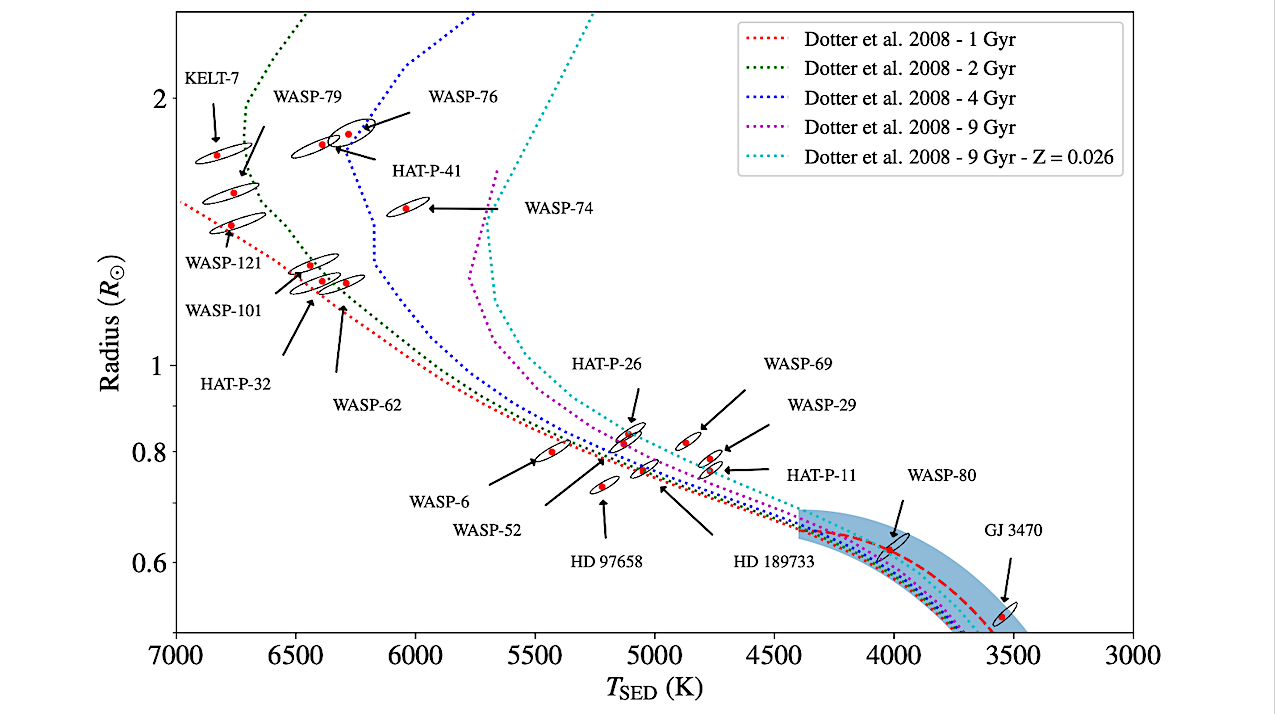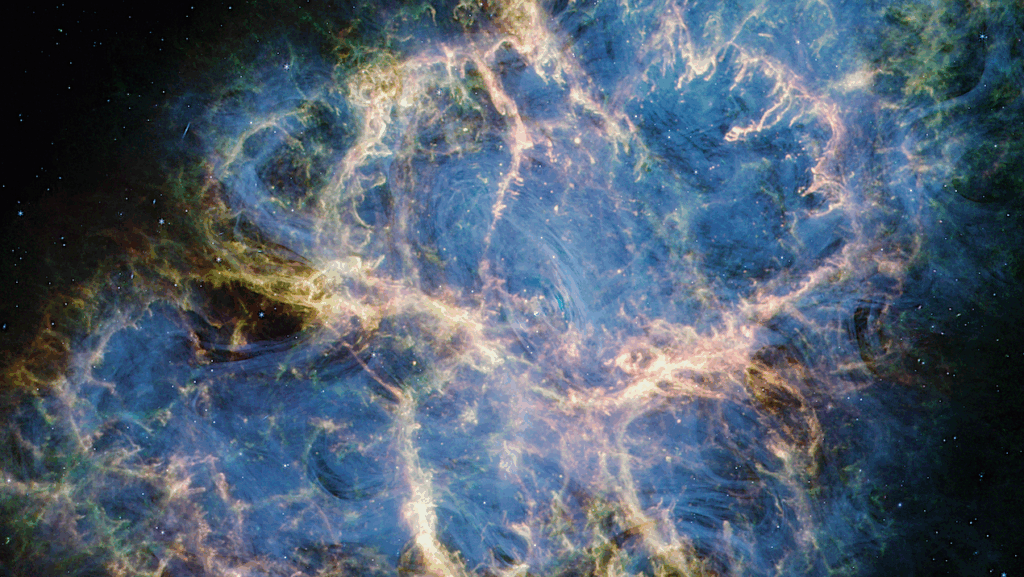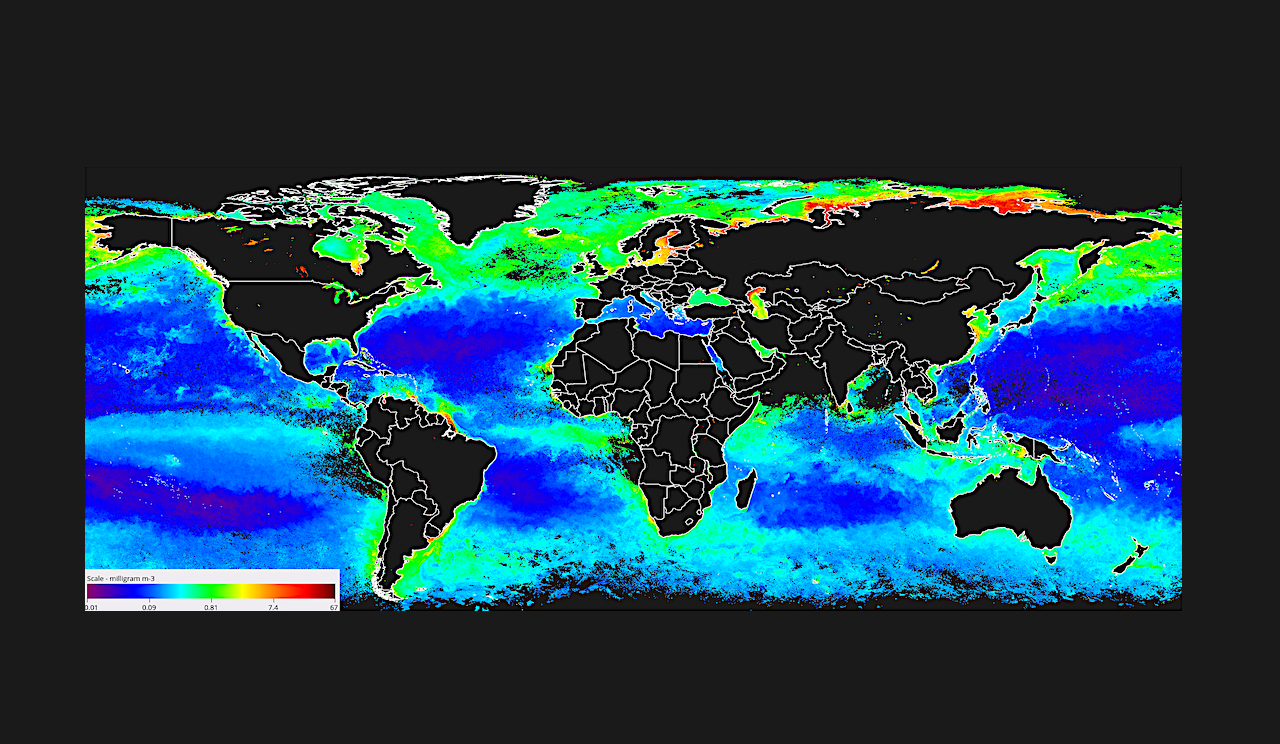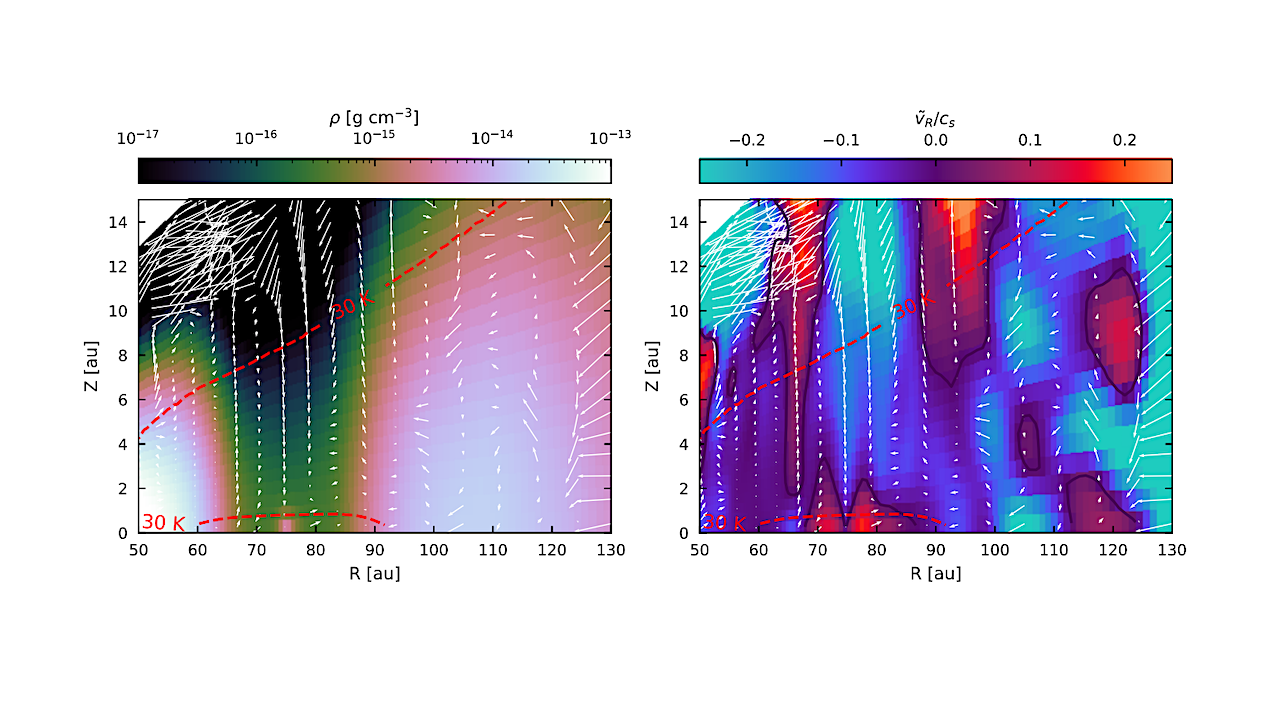Now Reading: Using Stellar Spectral Energy Distributions to Measure Exoplanet Parameters
-
01
Using Stellar Spectral Energy Distributions to Measure Exoplanet Parameters
Using Stellar Spectral Energy Distributions to Measure Exoplanet Parameters


The host star properties in 𝑇SED − 𝑅★ space, along with their associated 68% confidence contours. For comparison we show a series of isochrones from Dotter et al. (2008) and the M-dwarf temperature radius relationship (red dashed line) derived in Morrell & Naylor (2019) and its bounds (blue shaded region). We emphasise that we do not expect all the stars to lie on these relationships, for example HD 97658 which is known to be metal poor (Howard et al. 2011) and so should lie below the Solar metallicity isochrones. — astro-ph.EP
The ability to make accurate determinations of planetary parameters is inextricably linked to measuring physical parameters of the host star, in particular the stellar radius.
In this paper we fit the stellar spectral energy distributions of exoplanet hosts to measure their radii, making use of only archival photometry, the Gaia parallaxes and Gaia extinction maps. Using the extinction maps frees us of the degeneracy between temperature and extinction which has plagued this method in the past. The resulting radii have typical random uncertainties of about 2 per cent.
We perform a quantitative study of systematic uncertainties affecting the methodology and find they are similar to, or smaller than, the random ones. We discuss how the stellar parameters can be used to derive the properties of both transiting exoplanets, and those where only a radial-velocity curve is available. We then explore in detail the improvements the method makes possible for the parameters of the PanCET sample of transiting planets.
For this sample we find the best literature measurements of the planetary radii have mean uncertainties about 40 per cent larger than those presented here, with the new measurements achieving precisions of 2 per cent in radius and 10 per cent in mass. In contrast to much recent work, these transiting exoplanets parameters are derived without using theoretical models of stellar interiors, freeing them of the assumptions those models contain, and any priors for stellar age.
As the data used are available for the whole sky, the method can be used for self-consistent measurements of the planetary parameters of a very large fraction of known exoplanets.
Sam Morrell, Tim Naylor, John Southworth, David K. Sing
Comments: Accepted for publication in MNRAS 7th November 2025. 22 pages, 21 Figures
Subjects: Earth and Planetary Astrophysics (astro-ph.EP); Solar and Stellar Astrophysics (astro-ph.SR)
Cite as: arXiv:2511.07536 [astro-ph.EP] (or arXiv:2511.07536v1 [astro-ph.EP] for this version)
https://doi.org/10.48550/arXiv.2511.07536
Focus to learn more
Submission history
From: Samuel Morrell
[v1] Mon, 10 Nov 2025 19:00:14 UTC (4,713 KB)
https://arxiv.org/abs/2511.07536
Astrobiology,
Stay Informed With the Latest & Most Important News
Previous Post
Next Post
-
 012024 in Review: Highlights from NASA in Silicon Valley
012024 in Review: Highlights from NASA in Silicon Valley -
 02Panasonic Leica Summilux DG 15mm f/1.7 ASPH review
02Panasonic Leica Summilux DG 15mm f/1.7 ASPH review -
 03How New NASA, India Earth Satellite NISAR Will See Earth
03How New NASA, India Earth Satellite NISAR Will See Earth -
 04And Thus Begins A New Year For Life On Earth
04And Thus Begins A New Year For Life On Earth -
 05Astronomy Activation Ambassadors: A New Era
05Astronomy Activation Ambassadors: A New Era -
06SpaceX launch surge helps set new global launch record in 2024
-
 07From Polymerization-Enabled Folding and Assembly to Chemical Evolution: Key Processes for Emergence of Functional Polymers in the Origin of Life
07From Polymerization-Enabled Folding and Assembly to Chemical Evolution: Key Processes for Emergence of Functional Polymers in the Origin of Life





















